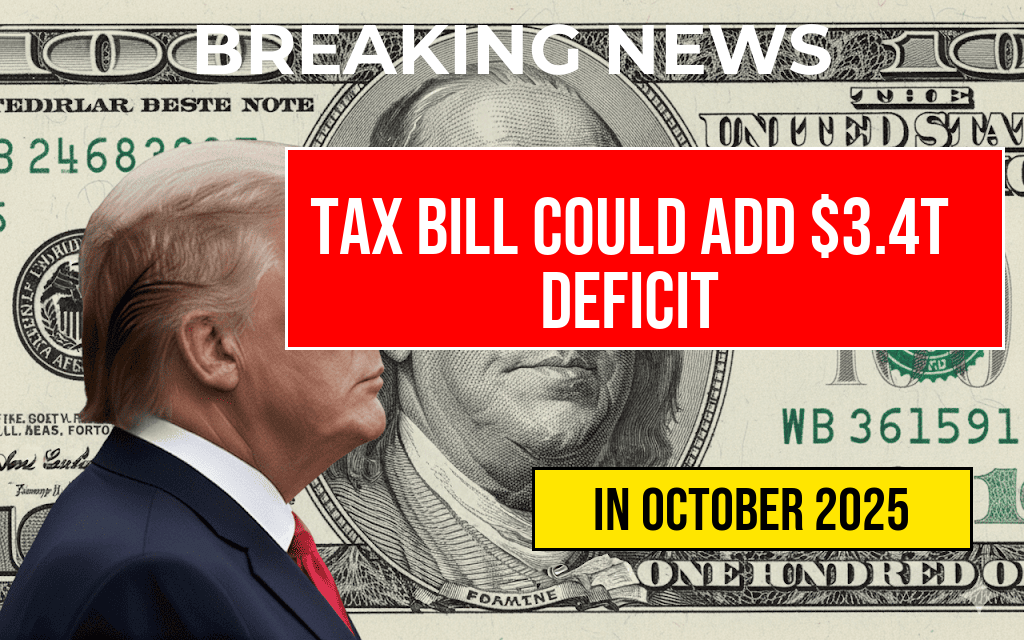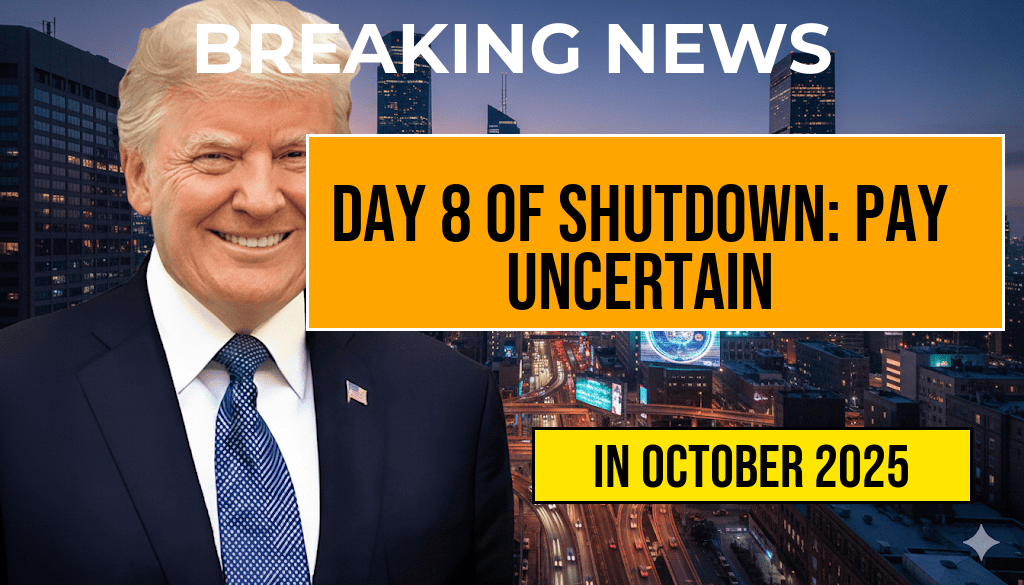As the federal government enters its eighth day of shutdown, thousands of federal workers face mounting uncertainty regarding their paychecks. With congressional negotiations stalled over budget disagreements, many employees remain in limbo, questioning whether they will receive their full salaries or if missed payments will become the norm. The shutdown, now the longest in recent U.S. history, has disrupted numerous government services and strained the livelihoods of federal employees across the country. Despite efforts from some lawmakers to craft a resolution, no clear path to reopening has emerged, leaving federal workers in a state of financial limbo and raising concerns about the broader economic implications.
Federal Workers Grapple with Pay Uncertainty as Shutdown Extends
The ongoing government shutdown, which began on October 1, has entered its eighth day without resolution, affecting approximately 800,000 federal employees. While some workers have been furloughed—sent home without pay—others are required to work without assurance of compensation. The core issue remains political disagreements over funding levels and policy priorities, with negotiations stalled in Congress. As the shutdown persists, the debate over whether federal employees will receive their full paychecks continues to dominate headlines and congressional discussions.
Legal and Policy Framework Governing Federal Pay During Shutdowns
Federal employees scheduled to work during a shutdown are generally entitled to back pay once funding is restored, based on existing laws and regulations. According to the U.S. Office of Personnel Management (OPM), employees required to work during a shutdown are considered “excepted” employees and are typically paid retroactively. However, employees furloughed are not paid until funding resumes, which raises concerns about financial hardship for many. The distinction between paid and unpaid status depends on whether the employee’s duties are deemed essential to national safety or public health.
Impact on Federal Employees and Their Families
| Category | Number of Employees |
|---|---|
| Furloughed Employees | Approximately 420,000 |
| Essential Workers Working Without Pay | Approximately 380,000 |
| Total Affected Employees | About 800,000 |
Many federal workers are facing financial strain due to delayed paychecks, with some reporting difficulties in covering basic expenses such as rent, utilities, and groceries. The National Public Radio highlights stories of workers resorting to personal loans or cutting back on essentials. While some members of Congress have pledged to prioritize back pay, the uncertainty surrounding the timing of these payments leaves many in a precarious financial position.
Political Implications and Congressional Responses
Partisan divisions have hampered efforts to pass a short-term funding measure or a comprehensive budget agreement. Senate leaders from both parties have engaged in negotiations, but disagreements over immigration policies, defense spending, and domestic programs continue to stall progress. House Republicans and Senate Democrats have each proposed different funding bills, though none have gained enough support to pass both chambers. The CNN reports that the prospects for an immediate resolution remain uncertain, prolonging hardship for federal employees and service recipients alike.
Potential Economic and Public Service Consequences
The shutdown’s ripple effects extend beyond federal employees. Many government agencies providing critical services—such as the Department of Health and Human Services, the Federal Emergency Management Agency, and the Internal Revenue Service—have scaled back operations, leading to delays and disruptions. The Congressional Budget Office has warned of potential economic impacts, including slowed growth and reduced consumer confidence, especially if the shutdown persists into the holiday season. Small businesses that rely on government contracts and services are also feeling the strain as uncertainty persists.
Expert Opinions and Future Outlook
Economists and policy analysts warn that prolonged shutdowns can damage the nation’s economic stability. Mark Zandi, chief economist at Moody’s Analytics, emphasized that continued deadlock could undermine economic growth and erode public trust in government institutions. Meanwhile, some lawmakers advocate for reforms to prevent future shutdowns, including automatic continuing resolutions or enhanced budget mechanisms. As the stalemate continues, the focus remains on whether bipartisan cooperation will emerge to end the crisis and secure pay for federal workers.
For now, federal employees and their families await clarity, while political leaders grapple with the challenge of balancing fiscal responsibility with the immediate needs of public servants. The coming days will likely determine whether negotiations yield a resolution or if the shutdown extends further, compounding financial and operational disruptions across federal agencies.
Sources: Wikipedia – Federal Government of the United States, Forbes – Impact of Government Shutdown on Federal Workers
Frequently Asked Questions
What is the current status of the government shutdown on Day 8?
The government shutdown has entered its eighth day, affecting various federal operations and employees nationwide. As negotiations continue, many federal services remain suspended or limited.
Are federal workers going to receive their full pay during the shutdown?
Most federal workers are currently facing uncertainty regarding their paychecks. Typically, during a shutdown, non-essential employees may not receive full pay until funding is restored, though some essential workers may continue working with partial or delayed compensation.
Will federal employees receive any pay at all during the shutdown?
While some federal employees may not receive paychecks during the shutdown period, essential personnel often continue to work and may receive retroactive pay once funding is reinstated. However, this varies depending on legislative decisions and agency policies.
What are the potential impacts of the shutdown on federal services?
The shutdown can lead to the closure of government offices, delays in public services, and disruptions in federal programs. Citizens may experience longer wait times and reduced access to services until funding is restored.
How can federal workers and the public stay informed about the shutdown’s developments?
Federal workers and the public are advised to monitor official government websites, news updates, and communications from their agencies for the latest information on shutdown progress, pay schedules, and service disruptions.










